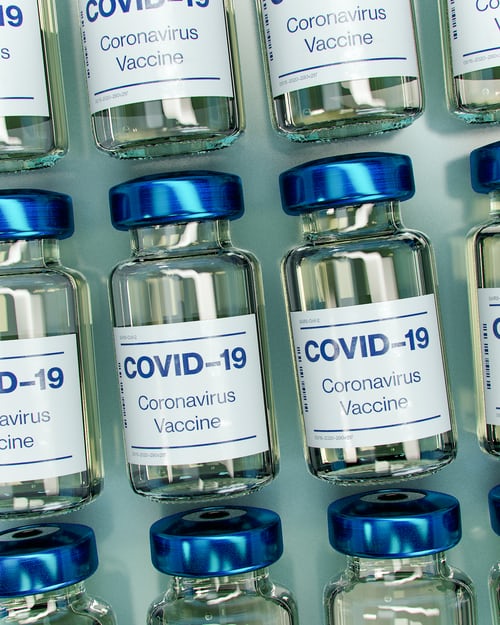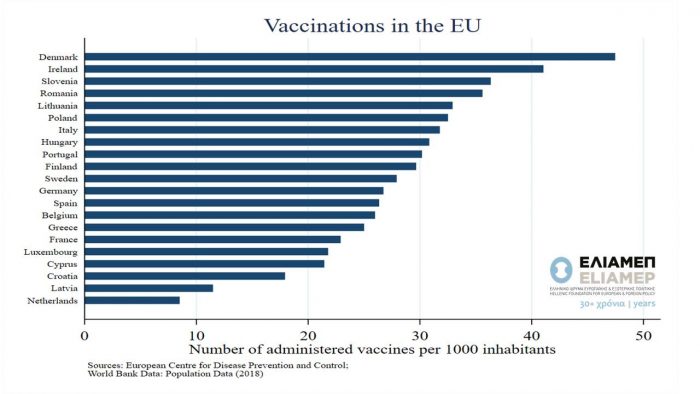The speed with which the population of European countries will be vaccinated is crucial for the recovery of their economies from the Covid-19 crisis, since the larger the share of the vaccinated population, the lower the need for restrictive measures, which are largely responsible for the recession, as demonstrated in a previous post.
In this context, in the graph above, we depict data obtained from the European Center for Disease Prevention and Control (ECDC). The data shows the number of vaccinations that have taken place in each country. The data is presented in relation to the population of each country, adapted to show the number of vaccines given per 1000 people.
For the countries that data is available, the European average shows that almost 28 per 1000 inhabitants have been vaccinated against Covid-19 by the 3rd of February. The variance is 9, indicating that there is some variation between European countries in the vaccination rate so far, which, however, is not very large. We observe that in the top three spots are Denmark (47 people vaccinated per thousand or 275,007 vaccines), Ireland (41 people per thousand or 199,800 vaccines), and Slovenia (36 people per thousand or 75,348 vaccines). Greece ranks 15th in the relevant list, with 25 people per thousand and 268,417 vaccines.
It should be noted, that despite recent criticism against the EU over vaccine production delays, the above picture of a relatively balanced vaccination progress across member states, should be credited to the vaccine co-supply model used by the EU. Without it, there would be significant differences between countries, and it is almost certain that smaller and poorer member states would be at a disadvantage.




